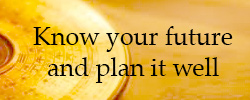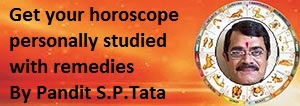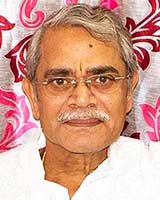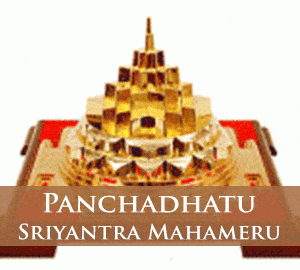Five Pranas
NAME COLOUR LOCATION REGION FUNCTION SUB-PRANAS
Prana Yellow Anahata Chakra Chest Respiration
1. Naga does eructation and hiccup.
Apana Orange red Muladhara Chakra Anus Discharge of urine and faeces
2. Kurma performs the function of opening the eyes.
Samana Green Manipura Chakra Navel Digestion
3. Krikara induces hunger and thirst.
Udana Violet blue Vishuddha Chakra Throat Deglutition. Takes the Jiva to Brahman in sleep. Separates the physical body from the astral body at death
4. Devadatta does yawning.
Vyana Rose Swadhishthana Chakra Entire body Circulation of blood
5. Dhananjaya causes decomposition of body Nadi Suddhi (purification of Nadis) is an important matter in the early stage of Yoga. If there are impurities in the Nadis, the ascent of Kundalini in the Sushumna is seriously retarded. Purity in the Nadis facilitates the ascent of Kundalini. Pranayama brings about quick purification of the Nadis. Nadi Suddhi is the basis of Yoga. It is the foundation of Yoga. It is the first part of Yoga.
Just as you can stop all the other wheels of the factory if you can stop the important fly-wheel of the engine, so also if you can stop the functions of all other organs of the body, you can get control of the subtle, psychic Prana by restraining the breath. That is the reason why Pranayama is prescribed for controlling Prana.
Prana is the over-coat of the mind. If you can control Prana, you can control mind and Veerya also, because Prana, Veerya and mind are under one Sambandha. If you can control mind, breath stops by itself. Prana comes under control. Just as you have a nervous system in the gross physical body, so also there is a nervous system in the astral body. The nervous system of the physical body is the Sthula Prana. The nervous system of the astral body is the Sukshma Prana. There is intimate connection between these two Pranas. There is inter-action between these two Pranas.
By controlling the act of breathing, you can efficiently control all the various functions in the body. You can very easily and quickly control and develop the body, mind and soul. Psychic cure, Telepathy, Television, thought-reading and other Siddhis are the effects of the control of Prana. The process by which the Prana is controlled by regulation of breath is termed ‘Pranayama’. It is through Pranayama that you can control your circumstances and character and consciously harmonise the universal individual life with the cosmic life.
Pranayama
To suit the different constitutions, temperament and purpose, in Pranayama there are many varieties of exercises, viz., deep breathing exercise, Sukha Purvaka (easy comfortable) Pranayama during walking, Pranayama during meditation, Rhythmical breathing, Suryabheda, Ujjayi, Sitkari, Sitali, Bhastrika, Bhramari, Murchha, Plavini, Kevala Kumbhaka, etc. Of all the above exercises only the last eight are described in the Hatha Yogic texts.
Nadi Suddhi
Before commencing the practice of Pranayama however, you should clean the Nadis. Then only will you derive the maximum benefit from Pranayama. The cleansing of the Nadi (Nadi-Suddhi) is either Samanu or Nirmanu—that is, with or without the use of Bija. According to the first form, the Yogi in Padmasana or Siddhasana offers his prayers to the Guru and meditates on him. Meditating on ‘Yang’ (y:ú) he does Japa through Ida of the Bija 16 times, Kumbhaka with Japa of the Bija 64 times, and then exhalation through the solar Nadi and Japa of Bija 32 times. Fire is raised from Manipura and united with Prithvi. Then follows inhalation by the solar Nadi with the Vahni Bija ‘Rang’ (rú) 16 times, Kumbhaka with Japa of the Bija 64 times, followed by exhalation through the lunar Nadi and Japa of the Bija 32 times. He then meditates on the lunar brilliance, gazing at the tip of the nose, and inhales by Ida with Japa of the Bija ‘Thang’ (Yú) 16 times. Kumbhaka is done with the Bija ‘Vang’ (v:ú) 64 times. He thinks himself as flooded by nectar, and considers that the Nadis have been washed. He exhales by Pingala with Japa of the Bija ‘Lang’ (l:ú) 32 times and considers himself thereby as strengthened.
Now I will tell you a few important exercises only, that are useful in awakening the Kundalini.
1. Sukha Purvaka
(Easy Comfortable Pranayama)
Sit in Padmasana or Siddhasana. Close the right nostril with your right thumb. Inhale (Puraka) through the left nostril till you count 3 Oms slowly. Imagine that you are drawing the Prana along with the atmospheric air. In course of practice, you will actually feel that you are drawing Prana. Then close the left nostril also with the little and ring fingers of your right hand. Retain the breath till you count 12 Oms. Send the current down to the Muladhara Chakra. Feel that the nerve-current is striking against the Muladhara Chakra and awakening Kundalini. Remove the right thumb and exhale through the right nostril till you count 6 Oms. Again inhale through the right nostril, retain and exhale through the left nostril as stated above. All the above six processes constitute one Pranayama. To start with do 6 Pranayamas in the morning and 6 in the evening. Gradually increase it to 20 Pranayamas for each sitting. The ratio of inhalation, retention and exhalation is 1:4:2. You should gradually increase the period of Kumbhaka.
Be careful in doing the Kumbhaka as long as you can comfortably do. Do not be in a hurry. Be patient. Contract the anus and do Mula Bandha also. Concentrate on the Chakra and meditate on Kundalini. This is the most important portion of this exercise. In this Pranayama, deep concentration plays a vital part in awakening Kundalini. Kundalini will be awakened quickly if the degree of concentration is intense and if practised regularly.
This exercise removes all diseases, purifies the Nadis, steadies the wandering mind, improves digestion and circulation, helps Brahmacharya, and awakens Kundalini. All the impurities of the body are thrown out.
2. Bhastrika
Rapid succession of forcible expulsions is a characteristic feature of this exercise. ‘Bhastrika’ means ‘bellows’ in Sanskrit. Just as a blacksmith blows his bellows rapidly, so also you should inhale and exhale rapidly. Sit in your favourite Asana. Close the mouth. Inhale and exhale quickly 20 times like the bellows. Constantly dilate and contract the chest as you inhale and exhale. When you practise the Pranayama a hissing sound is produced. You should start with forcible expulsions of breath following one another in rapid succession. After 20 such expulsions, make a deep inhalation and retain the breath as long as you can comfortably do and then slowly exhale. This is one round of Bhastrika.
Begin with 10 expulsions for a round and increase it gradually to 20 or 25 for a round. The period of Kumbhaka also should be gradually and cautiously increased. Rest a while after one round is over and again begin the next round. Do 3 rounds in the beginning and after due practice, do 20 rounds in the morning and 20 in the evening.
Advanced students do this Pranayama after partial closing of the glottis. They do not make a powerful noise like the beginners. They can do it even in a standing posture.
Bhastrika removes inflammation of the throat, increases the gastric fire, destroys phlegm and all diseases of the nose and lungs, eradicates Asthma, consumption and other diseases which arise from the excess of wind, bile and phlegm. It gives warmth to the body. It is the most effective of all Pranayama exercises. It enables Prana to break through the three Granthis. All the other benefits of Sukha Purvaka Pranayama are obtained in this exercise also.











